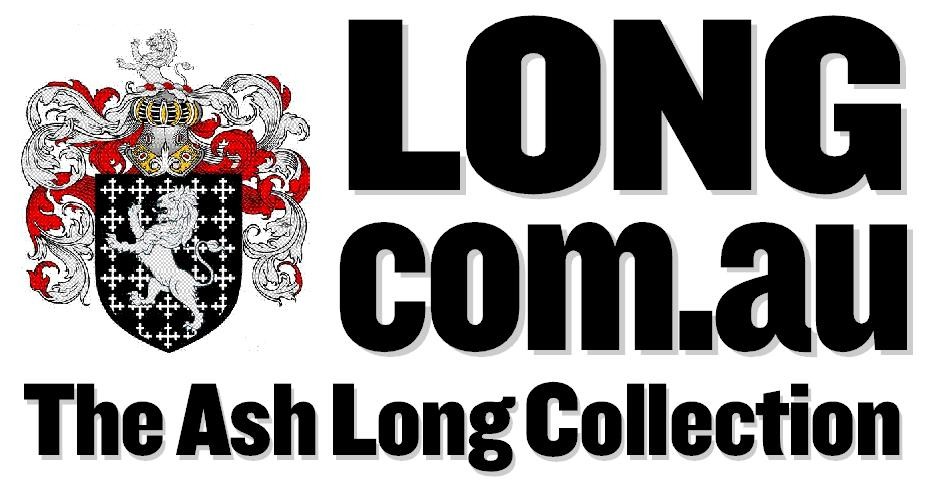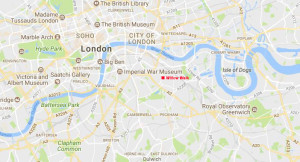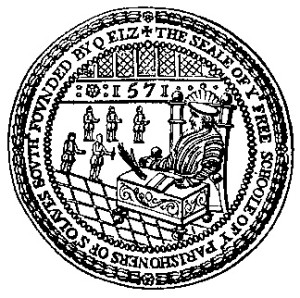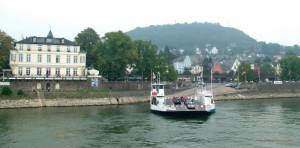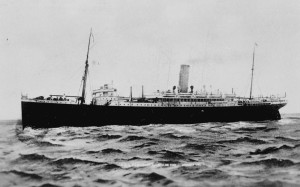Albert Lawrence: 1892-1968
Tuesday, September 20, 1892
My maternal grandfather was Albert Fletcher Lawrence. Aunt Joy Wood penned these notes in 1995:
My Dad was born on September 20, 1892, at 5 Willow Walk, Bermondsey. He was the second son of Joseph and Sarah Jane (nee Fletcher) Lawrence. Bermondsey was in the registration district of St Olave, Southwark, in the sub-district of Saint Mary Magdalen in the County of London.
His father’s occupation is noted as a Leather Finisher. His living grandparents at that time would have been Elizabeth Lawrence (nee Lowe) and John Fletcher.
Albert’s elder brother, Joseph Henry, would possibly have not been more than two years of age. His next sister was to be Ida Annie, born October 11, 1893; then George Sydney, born October-December 1896; Frank Edward, December 21, 1898; Clara Ethel, December 29, 1900; Arthur Leonard, December 25, 1903; and Robert Edwin, in December 1905.
Bert often remarked how he had almost been born a Cockney – as he was born in the south of London, almost within distance of the Bow Bells of London. Various addresses are given for him during his childhood:
• Lewisham (where his mother’s sister, Annie [Mrs Joseph Tullett] lived)
• Blackheath
• Bermondsey
Aunt Idea said that the went to Elementary Schools; separate ones for boys and girls. Whilst in Lewisham, Aunt Ida said she went to a private school, and they went to a Presbyterian Sunday School. Bert later went to Monnow Road Higher Grade School when he lived in Bermondsey.
At the age of 12 he won a Junior County Scholarship at an examination held in October-November 1904, with 1494 competing candidates. So he went to St Olave’s and St Saviour’s Grammar School from 1905-1907. At age 14.7 he won first prize for Physics. The prize was a book, Westward Ho, which went into the possession of Bert’s son, ‘Jack’ (Albert John).
Bert received a Junior Certificate at St Olave’s in December 1906. He was evidently a good pupil and enjoyed his school life. I heard him remark how he would walk through Bermondsey to this school in his uniform and be plagued by the local youths, but as he was an able fighter they left him alone. Other school boys used to accompany him for safety.
He was proud to be a pupil of this school, and until his death he remained an ‘Old Boy’ of the school. There is a photo of him playing in a Fife band.
Aunt Clara stated that he was in St Olave’s Choir and wore a white gown and mortar board. She also stated that he was in Southwark Cathedral Choir. She remembers him playing Christmas songs and hymns on the piano.
Only he was allowed in the parlour to play the piano but Clara used to sit and listen to him. Aunt Ida had though that Bert had also played violin.
He was apparently was friendly with his cousin Harry Fletcher Junior. There was a form of rivalry as to who went to the better school. Harry Fletcher went to ‘Shooters Hill College’. Bert was unhappy when he had to leave school to go to Germany with his family as he had expected to stay at school and go on to university.

Tower Bridge, built between 1886 and 1894. The bridge crosses the River Thames close to the Tower of London and has become an iconic symbol of London.
Jack said that when Bert was going to school, the Tower Bridge was being built. It amused him how all the horse manure used to roll down when they lifted the Bridge for the shipping.
Clara said how her father had belonged to the Conservative Club, and they went to parties there. Jack said Bert and his friends had, full of mischief, obtained hold of a banner and they draped it on the balcony and wrecked one of the meetings.
The school organised a boxing match with gloves, with Bert later telling his son that it was “exhilarating” and a “triumph”.
About 1908 Bert went with his family to Germany. His father Joseph had been offered a job as a Manager of a large leather factory in Kripp, near Remargen. A wealthy Jew, Mr Hintermeyer, who was noted as having a factory in Bermondsey, owned the factory in Kripp. His daughter had married a Count.
Mr hintermeyer sent Joseph to rescue the operation. Joseph took his family and three or four men by boat via Holland. Kripp was a little village on the Rhine River. They had a three-storied house and garden, which was usual for the area. There were cobblestone streets. They were quite comfortable.
They were only there about 18 months. The Aunts believed that Joseph had trouble with the Count and wanted to get out. As he was under contract for 10 years, they had to leave quietly and leave most of their possessions behind.
Bert was able to speak the ‘street’ German, and he had a friend, George Breuer, son of Adolph. Whilst working in the factory, Bert had an accident with the machinery and hurt his arm, and was in a German hospital for a while. He spoke of how he did not like it as it was run by the nuns, and they could not speak English. His father often used to take the family on the ferry across the Rhine to visit Linz.
In later years on different occasions, both myself (Joy Wood) and cousin Barbara visited Kripp to find that it still had cobblestone streets. Aunt Clara, looking at photographs, said that it had not changed so much after all the years. The name of the factory was ‘Lederfabrik’. Kripp is near Remargen in Germany. Bert had a German fishing licence.
When the family returned to London, it was probably late 1909 or 1910. Bert’s father, Joseph, decided to go to America to see about migrating there. In the meantime the family lived at 48 Senegal Road, Bermondsey. Bert worked for tanners called Bevingtons, the only big factory left in Bermondsey. The other tanners had left. There is a statute of Colonel Bevington in Bermondsey.
Bert had friends in Rolls Road, they drove motor bikes. Alf Perrin was one such friend. Bert also joined the King’s Royal Rifles, where he met Tom Hall. In the King’s Royal Rifles, they all used to ride push bikes, and when they rode in the lanes they used to ride one-behind-the-other. Evidently it was hilarious if one was beside the hedges on the side of the road, as one would see a row of heads moving along. On the side of each bike was a scabbard to hold a gun. Dad was proud of the fact that he rode his bike to Brighton (UK).
One character was Tom Hall, who fought as a drummer boy in the Boer War when he only was only 12 years of age. He used his brother’s Birth Certificate. Tom also lived at 52 Senegal Road, Bermondsey, and was married to Mary (nee O’Brien), who was our mother Honora’s eldest sister. Tom asked Bert to coach him for an exam he had to do to get into the Police Force, and that is how Bert met ‘Norah’, when he was visiting Tom and Mary.
In later years they used to joke about “underneath the arches”, especially when that song was sung. I wonder if these arches were the ones formed by the overhead railway line that passed through Bermondsey. The train ran on high brick wall, and arches had been cut through to let the traffic through – and there were also little places built within the wall, probably used as small factories, offices and shops. I think my Mum and Dad must have done some of their ‘courting’ in these arches.
Marj remembers that Dad and Mum used to meet at Tottenham Court Road, London, and of how Mum used to love to go to Hampton Court. They also spoke of Crystal Palace, and Mum had some jewellery pieces bough there. Jack had a postcard Folkestone/Margate on it, so maybe they visited there.
Evidently the Lawrence relatives all still lived around the Bermondsey area. Dad had an address at his Uncle George Lawrence at 262 St James Road, Bermondsey, in his address book. Dad also spoke of his friends in Rolls Road, and Jack had a photo of two men and a type of motor-cycle cat. The photo was dated 1911.
Joseph came back from America, but had not liked the working conditions there. A tanner, Broadhurst, paid the fare for my grandfather Joseph, and his elder son, Joseph Henry, to come to Melbourne. Here Joe was employed as a Manager for their patent leather and graining sections and was a finisher. They found a house at 36 Regent St, Regent, with an acre of land and a large shed. It was nearly opposite the Regent Railway Station.
Meantime in England, Bert was helping his mother look after the family and they were now selling up what was left of their possessions to come to Australia. Jack thinks they could have lived in Jamaica Road at this time.
The family came to Australia on the Demosthenes and arrived on October 11. It was the ship’s maiden voyage. Dad paid his own fare. In a book is noted, June 30, 1911: Received from A.F. Lawrence, sum of £4 for fare. Signed S. Lawrence. Witness: I. Lawrence.
Bert went to work for Till Motor Engineer Co., 668 Elizabeth St, Melbourne. He was employed as a turner. In 1912 he went to work for A.E. Kane, Leather Factory Merchant, Tanner’s Machinery, 307 Lonsdale Street, where he worked for three years. He had a reference dated August 17, 1915: “had charge of plant and machinery at leather works of Lawrence Morton Ltd, where his father was a Director and here as an engineer he showed both skill and industry”. Also noted is Empire Motors Carriage Works, Weichelts, 231 Queens Parade, Clifton Hill, where he installed plant and machinery.
On November 13, 1915, he was doing a course with the International Correspondence School, Sydney. On January 8, 1916, he completed an Electric Lighting and Traction course, obtaining 90 per cent for each exam paper.
World War I was on and Dad had thoughts of joining the Navy, particularly the submarines. He had a friend, Neil Wells, who had joined up. Son, Jack, believed that they thought they may be able to get back to England to their girlfriends. Neil was killed and is on the ANZAC list. Years later, the details relating to Neil were obtained, and it was noted that he had originally gone to St Olave’s Grammar School, and had been out in Australia, working for Michael Hallenstein. No doubt, Dad may have known him in England.
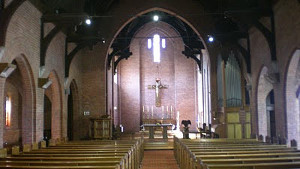
All Saints Church of England, Preston, at which Albert Lawrence and Honora O’Brien were married on January 30, 1915.
Bert wrote to Norah, he giving her the option of coming out to Australia, or he would join up. In 1914 his family had shifted to 81 Gooch Street, Thornbury. This is the address to which Honora O’Brien came on the Indrapura, which arrived on November 27, 1914. She was glad to arrive as the boat had come out on War conditions. The Emden was looking for ‘prey’ and the boat was in blackout conditions, and only stopped at South Africa on the way from England to Australia.
Bert and Norah were married in January 30, 1915, at All Saints Anglican Church, Preston. Bert was 22 and noted as a Fancy Leather Dresser. Norah was 23; her birthplace was listed as Banstead, Surrey, England. She was the daughter of John and Catherine (nee Lynch/O’Brien). Her father was a farmer. The witnesses at the wedding were Joseph Henry Lawrence and Ida Annie Lawrence. Bert and Norah went to live at 37 Clarendon St, Thornbury. They had a horse named Dolly and a jinker. Bert also owned a sp0anel dog called Laddie. Bert would have been working for A.E. Kane at the time.
Albert John (Jack) Lawrence was born on April 2, 1916, at 37 Clarendon St, Thornbury. In the 1917 Directory, Bert is shown at this address, and his father was at No 12 Clarendon St, Thornbury. Bert bought himself a car – a 5400 Talbot – it must have been one of the first cars around the area, and he was asked whether he would go to the City and meet a soldier who was coming home to Northcote.
Jack can remember the day when Peace was declared for World War I. Bert put a back on the car so that the family could go into the City and celebrate.
There was a baby boy, Charles, born, possibly 1917. He lived for only a few hours. Joyce Mary was born at home at 37 Clarendon St, Thornbury, on June 3, 1919. She arrived before Doctor Mendlesohn, and when the doctor did arrive he decided to spend the rest of the night sleeping on the couch.
There was no electricity to the house, and lamps were used. The evening before Joyce was born, Norah had gone out to buy candles. On the way to get the midwife, Bert had nearly got lost as there was a deep fog.
More to come.
